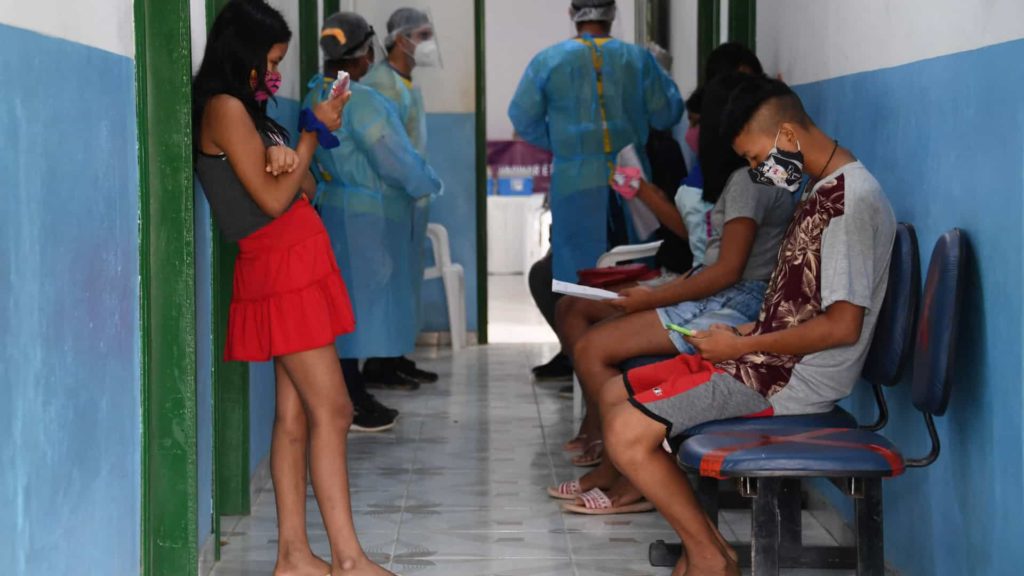RIO DE JANEIRO, BRAZIL – Initially concentrated in the state capitals, the Covid-19 pandemic has advanced more powerfully in recent weeks towards the interior, which now accounts for 59 percent of the country’s cases.

For the sake of comparison, at the start of the second fortnight of the pandemic, 65 percent of cases were found in capitals and only 35 percent in other cities.
A little over a month later, in late May, this percentage was matched, and the advance has continued since. Currently, 19 states record a higher proportion of cases in the interior than in their capital cities.
When the total number of deaths is considered, this parameter is also close: 48 percent of cases are found in the interior and 52 percent in the main cities of each state. The data are from the most recent weekly epidemiological report by the Ministry of Health, which was released again on Thursday, June 18th, after two weeks of blackout.
The releases were resumed amid criticism from experts and health institutions about changes in the disclosure of data on the Covid-19 epidemic in the country.
In addition to showing the development in the interior, the Ministry analyzes the distribution of cases according to the size of the population in municipalities. Until the end of the last week, when the data were counted, 4,590 cities – the equivalent of eight in every ten municipalities in the country – had at least one recorded case of Covid-19.
Of the 980 municipalities with no case records, 969 were cities with fewer than 25,000 inhabitants. Among cities with between 25,000 and 49,000 inhabitants, only ten had no records until the end of the last week. They were Ipixuna (Amazonas), Iraquara (Bahia), Santana (Bahia), Capelinha (Minas Gerais), Itamarandiba (Minas Gerais), Jaíba (Minas Gerais), São João da Ponte (Minas Gerais), Astorga (Pará), Jaguarão (Rio Grande do Sul) and Três Coroas (Rio Grande do Sul).
There was only one city with over 50,000 inhabitants that did not have Covid-19 cases: Prudentópolis (Pará). However, the situation changed last week. On Monday, June 15th, the City Hall announced the first confirmed case. Four days later, the total had already reached six confirmations. There were also at least 23 cases pending test results.
According to the Ministry of Health, while cases are growing in the interior, the country is beginning to show stabilization in the overall case curve – that is, when the increase occurs at a slower pace or similar to preceding weeks.
However, the portfolio stresses that confirmation of this assessment is still required in the coming weeks. “We need to keep monitoring if the stabilization trend in the number of cases persists or whether it is a reflection of a potential reduction in the number of tests due to the extended holiday in some Brazilian cities,” points out the document.
The potential stabilization also occurs at a time when the country records high numbers of new cases and deaths, and the total number of deaths still under investigation exceeds approximately 3,500 cases each day.
Brazil has already passed the one million Covid-19 case mark, with over 50,000 deaths, according to data collected by a media outlet consortium. An epidemiological report analysis also points to a potential deceleration of the curve in the North, Northeast, and Southeast regions. The South and Centerwest regions would still be in an earlier stage of the epidemic, “but are already showing a significant increase in recent weeks”.
Among the states, São Paulo, Rio de Janeiro, and Pará are still the ones with the highest number of new cases.
The majority of states, however, “show a reduction or stabilization trend, although it is very premature to assert that this trend will persist over the coming weeks,” says the document, citing two exceptions in this scenario: Paraíba and Espírito Santo, states that show an upward trend in cases and deaths.
The document also shows that in the Northeast the coastal region still records a high concentration of cases, although it is possible to see a process of interiorization. In the Southeast, the highest volume occurs in the cities of São Paulo and Rio de Janeiro. In the south, data point to a greater impact of the epidemic in the municipalities of Serra Gaucha, western Santa Catarina, and northern Paraná.
The portfolio also points out what it calls a “particularly worrying scenario” in the Centerwest, with a “spreading pattern” throughout the territory in more cities – although at first there was a more expressive concentration in Brasília.
Source: Folhapress

